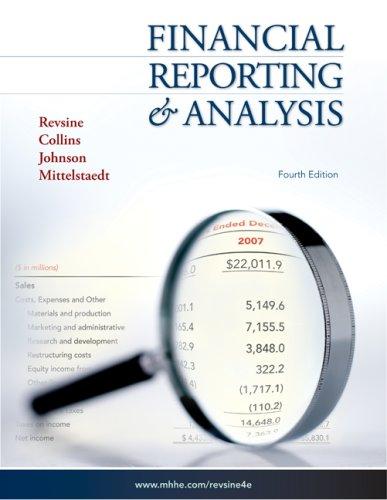Here's how Level 3 Communications moving target stock option plan works. Suppose options are granted on January
Question:
Here's how Level 3 Communication’s “moving target” stock option plan works. Suppose options are granted on January 1, 2000, when the company’s stock is selling for \($50\) a share. The options cannot be exercised until January 1, 2003, and the exercise price on that date is \($50\) plus a factor reflecting the change in the S&P Index between the grant date and the exercise date. If the Index increases 50%, so does the exercise price (to \($75).\) If the Index falls by 10% between the grant date and the exercise date, the exercise price also falls (to \($45).
Required:
1.\) On January 1, 2003, the company’s stock is trading at \($90\) a share. The S&P Index has increased 60 percent from its level at the grant date. What is the exercise price of Level 3's options? Have employees benefited from the company’s stock option plan?
2. What if the January 1, 2003, stock price was only \($70?\) Calculate the option exercise price and determine whether employees have benefited from the stock option plan. How well have Level 3 stockholders done since the grant date?
3. Stock prices and the S&P Index tend to increase when the Chairman of the Federal Reserve Bank lowers interest rates. What is the rationale for raising the exercise price when interest rates decline? What other macroeconomic risks can influence the value of employee stock options at Level 3?
4. Why haven't other companies adopted the Level 3 plan?
THE MOVING TARGET OPTION Nineteen ninety-eight was a good year for Harvey Golub, the chief executive of American Express. His stock options zoomed from \($45\) million to \($60\) million in value. But it was a bad year for Golub’s shareholders. They underperformed the S&P 500 by 13 percentage points.
The disappointed Amex holders have a lot of company. It's common these days for executives to get rich off options even as they deliver subpar results to their investors. It's the simple arithmetic of a bull market: Options can be worth a lot of money on a stock that rises, even if it badly lags the averages. .. .
How do we stop this madness? One bold telecom executive, James Crowe, shows how. When he founded fiber-optics network Level 3 Communications three years ago, he vowed to align his interests with investors. His option plan, which covers all employees, ties exercise prices to the S&P 500 Index. If Level 3 just keeps up with the average, the options are worthless.
If it outperforms, the options are worth a decent amount to rank and file employees and big money to top managers.
Level 3 investors aren't hurting and neither is Chief Executive Crowe. Since the stock was first offered to the public just under two years ago, it has tripled in price. Crowe has a \($300\) million paper profit so far on his options.
Crowe thinks every company should adopt an option plan like this one. “All kinds of companies have hurt their investors, yet managements are getting enormous payoffs,” he scolds.
Crowe is a lonely crusader. We don't know of a single other public company that ties option prices to the S&P.
Former Securities & Exchange Commissioner Joseph Grundfest, now a Stanford Law School professor, presented Level 3’s plan at his annual directors’ conference last year.
Directors of companies like American International Group, Bank America, Lucent and Time Warner attended. Grundfest reports their reaction: “Many thought it was a great idea for other companies.” He adds: “A Level 3-style plan would eliminate the Lake Wobegon effect, where all CEOs are above average.
Which is why it’s frightening to many.”
Step by Step Answer:






